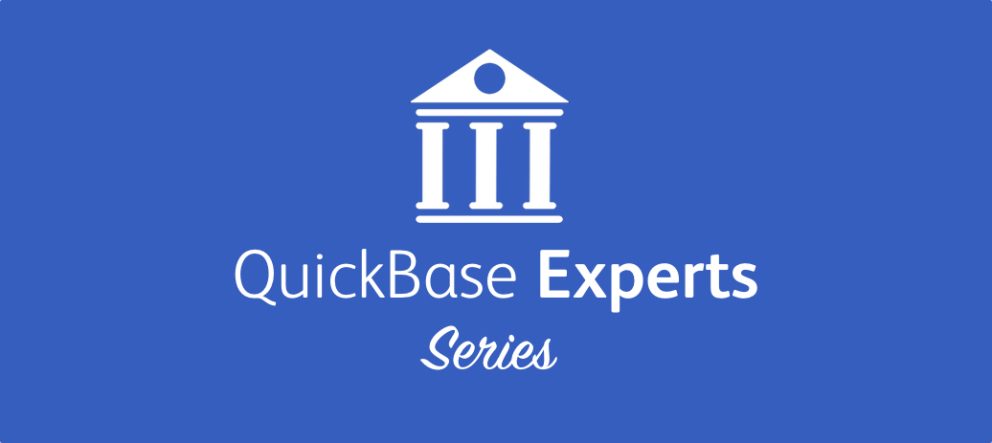
AI is everywhere, but productivity wins come from pairing Procore with Quickbase, clear guardrails, and small, repeatable apps.
AI, AI, AI—Now What?
Walking into Procore Groundbreak 2025, I knew AI would be a big topic. What I did not expect was that it would dominate every booth, every session, and every conversation. The excitement was real, and it should be. But so was the uncertainty.
Most of us in construction are still figuring out what AI means for daily work. How do we move from buzzwords to real productivity gains? How do we use AI to empower our teams instead of replacing them?
Here’s how I see it: AI is a tool for people, not a people replacement. At Skender, we focus on giving managers the visibility and support they need to make faster, smarter decisions.
The Power of the Hallway Track
Here's something that might surprise you: Groundbreak's biggest value for me wasn't the keynotes or the product demos. It was honest peer conversations happening in hallways and over coffee. Leaders share what works and what doesn’t, without competition or sales talk.
For first-time attendees, the experience is eye-opening. They gain exposure to new ways of working, modern tools, and realistic process improvements. Superintendents and project managers often identify “doable next steps” they can take home, such as small workflow changes, better tracking methods, or automation pilots that fit their teams’ daily routines.
This kind of learning builds genuine progress because it connects innovation directly to the field.
Big-Picture Industry Themes (and How We're Responding)
AI is now integrated into every layer of construction tech. From image recognition to virtual assistants, the aim is to simplify work, not reinvent it.
Here is how we are looking to approach these changes at Skender:
- Augmentation beats automation
AI should shorten the grind. It can help with daily logs, tracking, and reporting while humans handle context and judgment. - Change in enablement is critical
Introducing AI is not just a technology project; it is a people project. We plan to train managers to use AI responsibly, check results, and coach their teams. - Data governance is the real blocker
The challenge is not the number of features; it is where data goes and how it is protected. We prioritize security and control before experimentation, including AI - Targeted pilots
Every AI initiative should have a measurable purpose. We test, review, and scale only what improves forecasting, accuracy, or collaboration.
AI success is not about how big your plan is. It is about clarity of purpose and consistent results.
My Guidance for Construction Leaders
If you're leading a construction firm, here's what you need to do:
- Create an enterprise AI strategy
Set guardrails, approve specific tools, and establish confidential data domains. You can't have staff "going rogue" with public LLMs and feeding client data into unauthorized AI platforms. - Tie AI pilots to specific outcomes
Don't just experiment for the sake of experimenting. Target things like faster forecasting and projections, cleaner RFI and submittal oversight, or reducing hours spent on daily logs.
Practical results build trust and make AI adoption sustainable.
Where Quickbase Fits: The Flexible Layer That Closes Gaps
At Skender, Procore is our operational backbone, managing RFIs, submittals, and cost tracking. Yet every project has needs that fall outside standard systems. Quickbase fills those gaps.
The AI-poweredconstruction operations platform acts as a flexible layer that connects data, automates workflows, and keeps information consistent across teams. It gives us the ability to create exactly what we need, without long development cycles.
This connection has improved forecasting, streamlined reporting, and preserved field knowledge across projects.
The Challenge We Faced: Forecasting Bottlenecks
Let me get specific about what we were dealing with before Quickbase.
Our monthly forecasting process was trapped in an MS Access database. Fifty project managers tried to update it at the same time, creating bottlenecks and errors. We had no standardized forecasting process, and limited technical support.
Our tools were isolating people instead of connecting them. When employees left, their project knowledge was left with them.
We needed a modern solution that would connect with our existing systems instead of replacing them.
Our Solution: Connecting Procore and Quickbase
Here's how we approached it:
We used Quickbase Pipelines to synchronize jobs, revenue, teams, and costs between Procore and Quickbase. This gave us automatic data flows and pre-built pipelines that enabled seamless synchronization. Employee data flows directly from Procore, and our financial workflows connect without friction.
The beauty of this setup? We can build custom solutions without needing coding expertise.
Session Recap with Quickbase's Joe Reynolds
In our Groundbreak session, Joe Reynolds from Quickbase and I shared how Skender modernized forecasting and data management.
We started small with the Executive Profit Summary App, a quick Proof of Concept that delivered fast results. That success encouraged us to expand further.
Next came the Paint Project Management App, which fine-tuned our very specific project management needs for our self-perform painting divisions.
From there, we established three scalable build paths:
- Proof of Concept: Start with a small app to solve one problem. It's a quick, low-risk way to evaluate and prove value.
- Partner with Experts: For complex projects, we work with experienced Quickbase consultants who bring proven methods and support to help us scale faster.
- AI Smart Builder: Create app frameworks in minutes with no coding required. It sparks innovative ideas and extends our team's capacity.
Building Internal Capability:
We have one in-house resource managing Quickbase apps, not full-time. Projects are assigned part-time, as needed. That Proof of Concept validated Quickbase early on and gave us the confidence to go full enterprise with Quickbase. Now we're expanding into additional use cases.
Our AI Stance:
Our view on AI is practical. Smart Builder reduces blank-page time. AI is another tool, not a replacement for people. It helps teams work faster and with more confidence.
Outcomes:
All the above initiatives helped us retire from an outdated Access database, improve forecasting accuracy, and accelerate reporting cycles. Most importantly, they built a culture of ownership where teams now suggest new app ideas to improve efficiency.
My Groundbreak Takeaways
The real opportunity lies in applying AI practically and responsibly. Based on what I learned at Groundbreak and from our own implementations, here are some immediate steps for construction leaders:
- Build AI literacy
Train managers ask effective questions and interpret outputs correctly. Teach them how to ask better questions and coach agents to surface the right signals. Exceptions in RFIs, submittal status, cost overruns. AI should make their jobs easier, not add another tool to learn. - Stand up enterprise-safe AI
Use sanctioned, partitioned models to protect client data while enabling powerful use cases like drawing set navigation and document Q&A. - Pilot targeted "click-reduction" tools
We're assessing different AI tools for takeoff acceleration for our self-perform teams. Removing thousands of manual clicks and giving our teams time back in the field. - Tell concrete stories
Don't pitch platforms in the abstract. Show our project teams how Quickbase plus Procore solves a real gap, like procurement logs feeding back into Procore. That's when the value crystallizes.
What This Means for Talent and Culture
Here's something we don't talk about enough: cutting-edge, responsible AI attracts modern construction talent.
The next generation of construction project managers and superintendents expect these tools. Firms that ban or ignore AI will lose high performers who want to work efficiently and intelligently.
At Skender, Quickbase supports a participatory innovation culture. Field teams share ideas, turn them into apps, and see their solutions in action. It keeps innovation practical and people engaged.
Looking Forward: Building Skender’s Enterprise AI Strategy
Our enterprise AI roadmap focuses on responsible adoption and measurable outcomes. We are committed to:
- Keeping Procore as the operational foundation.
- Using Quickbase as the integration and innovation layer.
- Ensuring AI supports people, rather than replacing them.
- Embedding data governance and transparency into every stage of implementation.
AI is already part of modern construction work. The opportunity now is to use it safely, intelligently, and with the purpose of enhancing productivity and building stronger, data-informed teams.
Ready to bring your first Quickbase use case to life? Book a 30-minute working session with the Quickbase team.




